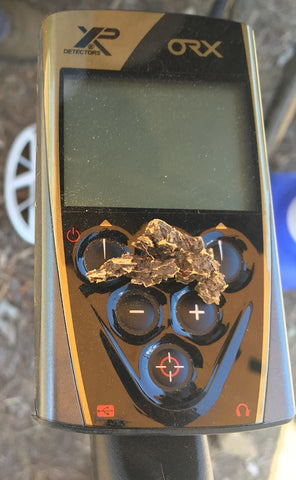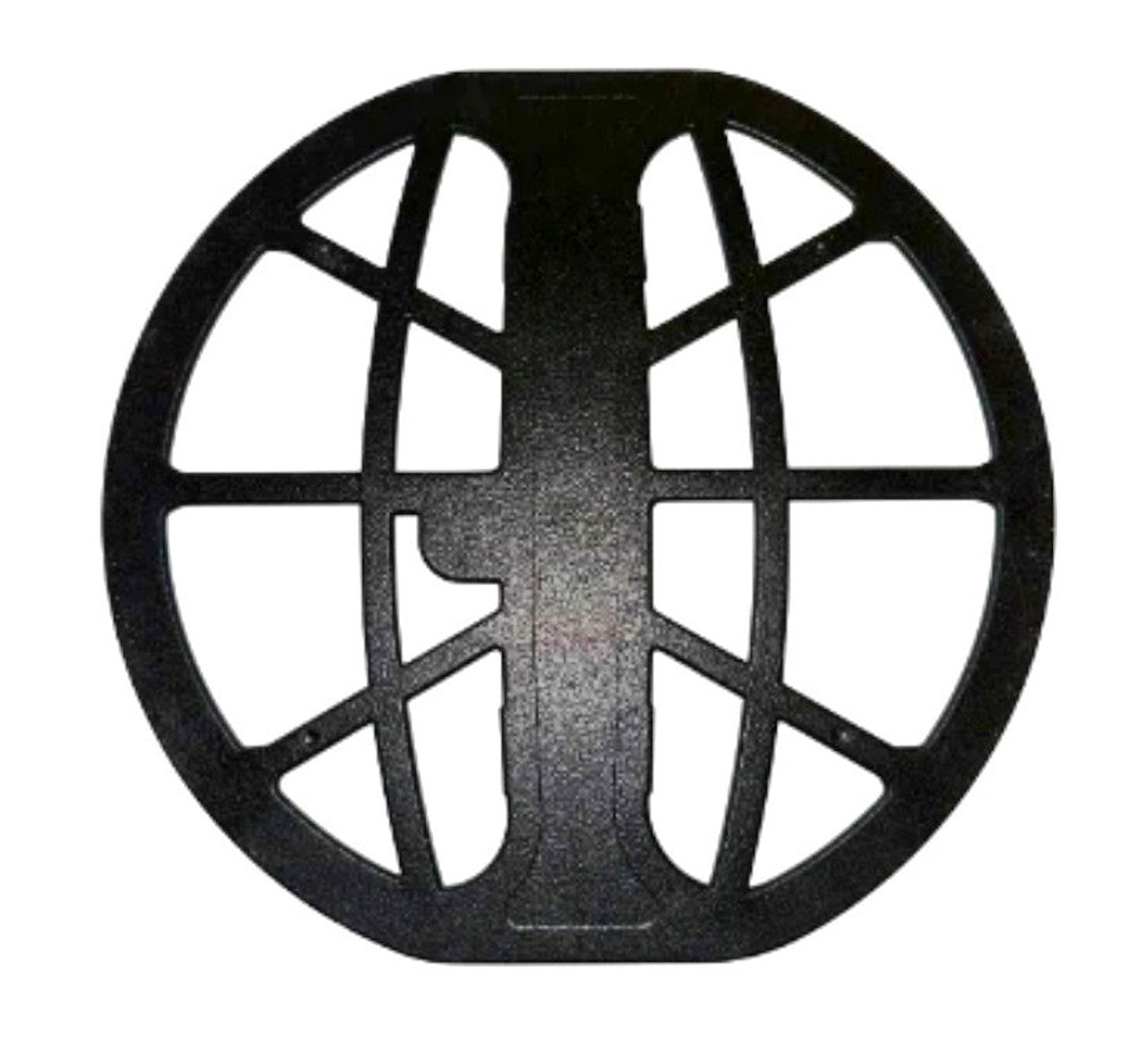
How to Master your New Metal Detector Reasonably quickly.
Share
You've just gotten your new metal detector from the 20% off sale at the fishing shop, the person that sold it to you knows nothing about them, What do you do?
This is one of the most common things happening in the metal detecting hobby right now. Literally Thousands of people have purchased a pretty powerful metal detector and they have NO idea how to use it, as the shop they got it from wasn't a specialist detecting retailer.
So what do you do now you have your metal detector?
The biggest mistake people make on their first few metal detecting outings is going looking for metal.
Sounds like a weird thing to say, but is 100% accurate. Looking for metal will lead you to a pretty torrid day and loads and loads of trash targets. Each one making you less keen for the hobby.
If your lucky you'll find something cool like a coin or even a piece of jewelry but for most it will be twist tops, ring pulls, canslaw and plenty of WTF is that?
The Biggest tip I give to all my coin and relic customers is this.
"Don't go Metal Detecting for Metal, Go Looking for a Particular TYPE of metal. Get good at finding that 1 thing and go from there."
Let me explain.
When you switch your new metal detector on and point it at the ground it almost immediately starts giving you information. Its looking for targets instantly and telling you what it sees under the ground via Audio tones and TID Numbers. But what does all that beeping and flashing up of numbers actually mean?
Number one it probably means there is metal in the ground and that's a good start. But what type of metal is it? How big is it? How deep is it?
The questions start piling up quickly and all the answers are right in front of you on a screen and also being blasted into your brain by the audio tones.
You just need to learn how to speak Metal Detector language to understand it all.
Ok Lets get into it and start teaching to you learn what all those tones and numbers mean.
Start simple, the $2 coin will be your target. They are reasonably plentiful in a lot of places and add up pretty quickly if you hit a patch of them. It's the BEST starting point for the majority of people.
So Lesson 1, in a nutshell is: STOP Looking for metal and start looking for $2 coins. You will dig way less trash, cover more area, leave less mess and taste success much quicker.

Go and grab yourself a 2 dollar coin, bury it in the yard or in the park at a depth of about 5 cm. This is where the bulk of the $2 coins will be, in the top 5cm of the soil. Yes there are some deeper, but chase those later. Your learning remember.
Now you have the $2 coin buried simply turn on your metal detector and run through your machines start up procedures like noise cancelling and ground balancing. Its all in the manual and is easy to do, no skill required. LOL
Once your machine is on and set up, Pick any program or setting you like and waive the thing over the buried $2 Coin.
Note how the machine reacts to the coin. Note the number that flashes up, note the sound it makes. Now change the machine to a different program and repeat the process. If your super new I would do this with every pre-set on the machine. Swing over that buried coin on each and every program.
The reason for this is for you to find the program that makes the most sense to you. Each of us is different in many many ways and detecting style is the same. We each do things a little differently that other people. So you need to start developing your style and developing what gives you the greatest joy while detecting.
Once you have selected the program on your machine that works for you, its time to get into the field proper and put that first lesson to the test.
Choosing the location is easy, just pick somewhere that has likely had some $2 coins dropped. Most parks qualify for this as does the beach. what I am getting at is don't go looking for $2 coins in the 1800's ghost town, there are probably not that many. Make sense? LOL
Once you have chosen the spot, Just before you start, shove a $2 coin on the ground and remind yourself what it sounds like and what other information the detector gives you like TID Number for example.
Now pick that $2 coin up and start detecting the area. Swing your machine low to the ground, and I mean as LOW as you can get it. Scraping just on the top is perfect.
IGNORE Everything except the tones or TID numbers your TEST $2 coin gave off. ONLY dig what you think is a good chance of being a $2 coin.
DO NOT be tempted to dig anything else, your on a targeted hunt and the $2 coin is all that matters today. Once you hear or see something that you think might be that $2 coin, neatly dig it up and see if your right or not.
Now this is the most important bit, so if you ignore everything else please focus on this part.
If you dig a target you thought was a $2 coin but it wasn't, don't throw the thing away...... YET.
Place that target back on the ground and place your test $2 dollar 30cm or so beside it. Now swing over both targets and take particular note of the differences in how your machine reacts to each one.
- Is there are a subtle difference in tone?
- Is one target giving me a stable number while the other one is all over the place?
- Am I hearing or seeing the indication of Iron Present?
- WHY did I think it was $2 coin?
- What tricked me that time, Number or tone or both?
These are some of the questions you should get answers to, before heading on to the next target. Those answers are there, you just need to take the time to go over each target and take note of what your machine is saying.
Do this for every target you thought was a $2 coin but wasn't. Pretty quickly you'll begin to notice how CLEAN a shallow coin signal is as opposed to a bottle top for example. You may also notice that the coin gives you a more stable TID Number and probably doesn't trigger any iron ID method your machine has.
Do this for as long as it takes to become familiar with your old mate the $2 coin.
A $2 coin is such a great starting point as a LOT of good targets are in and around that area on your machine. What I mean is $2 coins, High percentage silver coins and copper coins are usually not that far off the humble 2 bucker in Audio tone and TID Number.
So as a result of becoming good at finding those $2 coins it doesn't take long to become pretty good at finding pre-dec coins and of course $1 coins as well.
You can do the same with all coins and get to know each and every one and how your machine responds to them.
You will NEVER Learn all the tomes and TID Numbers at ONCE!
It is Virtually Impossible to do and will slow your progress down. Learn the coins One at a time, you'll be surprised how quickly you pick them u after you master one.
Here are 2 practical examples on my Deus:
A $2 coin is normally 86/87 But so are a lot of twist tops, however if you listen carefully the bottle tops give a small iron indication and the $2 coins Do NOT. After a while it is really easy to pick the difference and I mean really easy. BUT you need to take the time to learn that subtle difference.
Another example is the Number 53, 8 out of ten times 53 is a 5 cent coin. They aren't worth much but they are just so easy to identify that I have to pick them up. a coin is a coin after all.
This exercise of practicing on a known target and then comparing the known target the piece of trash you dug is PROVEN to speed up the time it takes to learn your machine exponentially.
FORGET changing settings at this point. Once you find the program that works for you NEVER CHANGE IT, Until your confident with the $2 coin. That confidence will soon spill over into other targets and before you know it your trash to coin ration will just get better and better.
Coins are easy to find if you train yourself to find them. Once you've mastered them then the hobby of metal detecting becomes a lot of fun. CONFIDENCE is King and focusing on a particular target will breed that confidence way faster than targeting metal in general. That stuff is everywhere and about 95% is absolutely worthless, so learn the difference between metal and coins, you'll enjoy the hobby way more.
Happy Hunting folks
Clegy

P.S Just thought I'd add that if your hunting gold, this does not apply. This counts for gold rings and gold nuggets.
Gold is VERY hard to target in the bush and in the parks/beaches. It just has too many variables that coins don't have.
The Karat of the gold (9K 18K 22K etc) will make your detector behave differently. The size and thickness of the piece of gold will also give different readings.
Small gold nuggets sound different to big gold nuggets as well.
I would say 98% of gold rings found are by accident and are normally a complete surprise to the finder. VERY VERY few people can accurately target them, in fact I would say in a modern ark there are O% of people who can pick them before they dig.
Silver jewelry is different and is normally found when the finder is expecting something like a $2 coin or maybe a pre-dec coin to appear. It is again very hard to target but has a much Narrower band than gold.

